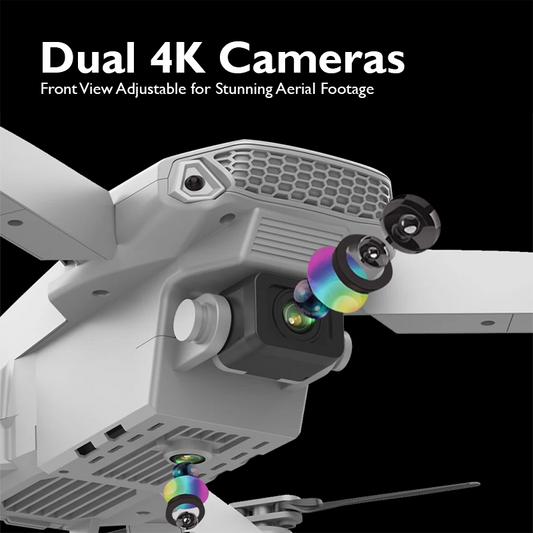How Drones are Aiding in Volcano Observation and Research

In the realm of natural phenomena, few spectacles rival the raw power and majesty of a volcanic eruption. These geological marvels, while awe-inspiring, also pose significant threats to surrounding communities and ecosystems. Understanding volcanoes and predicting their behavior is paramount for mitigating risks and saving lives. Fortunately, advancements in technology have provided researchers with powerful tools to study these fiery giants. Among them, drones have emerged as invaluable assets, revolutionizing volcano observation and research in ways previously unimaginable.
1.Harnessing the Potential of Drones in Volcanic Studies:

Drones, also known as unmanned aerial vehicles (UAVs), have transcended their military origins to become indispensable instruments in various fields, including environmental science. In the realm of volcano observation and research, their versatility and maneuverability have unlocked new avenues for exploration and data collection. Equipped with an array of sensors and cameras, drones offer researchers an up-close and personal perspective of volcanic activity, without risking human lives.
2.Real-Time Monitoring:
One of the most significant advantages of drones in volcano observation is their ability to provide real-time data. Traditional methods often rely on ground-based monitoring stations, which may not capture the full extent of volcanic phenomena. Drones can fly into the heart of volcanic plumes, capturing high-resolution imagery and sensor readings that enable scientists to analyze gas emissions, temperature gradients, and volcanic morphology instantaneously. This real-time feedback is invaluable for assessing eruption dynamics and making timely predictions.
3.Mapping Volcanic Terrain:

Volcanic landscapes are dynamic and ever-changing, shaped by eruptions, lava flows, and other geological processes. Mapping these terrains accurately is essential for understanding volcanic hazards and planning mitigation strategies. Drones equipped with advanced imaging technology, such as LiDAR (Light Detection and Ranging) and photogrammetry, can create detailed 3D models of volcanic topography with unparalleled precision. These models not only aid in hazard assessment but also provide insights into the underlying geological processes shaping the landscape.
4.Studying Lava Flows:

Lava flows are among the most visually striking manifestations of volcanic activity, but they also present significant challenges for researchers. Directly accessing active lava flows can be dangerous and impractical, often requiring specialized equipment and protective gear. Drones equipped with thermal imaging cameras can safely navigate close to lava flows, capturing temperature data that helps scientists track flow velocities and predict their paths. This information is crucial for assessing potential risks to nearby communities and infrastructure.
5.Gas Sampling and Analysis:

Volcanic gases, including sulfur dioxide, carbon dioxide, and water vapor, play a critical role in understanding eruption dynamics and assessing hazards. Monitoring gas emissions provides insights into magma degassing processes and can help forecast volcanic activity. Drones equipped with gas sensors can sample plumes directly, allowing researchers to analyze gas compositions and concentrations in near real-time. By tracking changes in gas emissions over time, scientists can identify precursory signals of impending eruptions and issue early warnings to at-risk populations.
6.Assessing Environmental Impact:

Volcanic eruptions have far-reaching environmental consequences, affecting air quality, water resources, and ecosystems. Drones equipped with multispectral and hyperspectral sensors can assess the environmental impact of volcanic activity by monitoring changes in vegetation health, soil composition, and water quality. This data enables researchers to evaluate the resilience of ecosystems to volcanic disturbances and develop strategies for mitigating long-term environmental damage.
7.Challenges and Future Directions:

While drones have revolutionized volcano observation and research, several challenges remain to be addressed. Limited flight endurance and adverse weather conditions can restrict drone operations in volcanic environments. Furthermore, integrating drone data with existing monitoring networks poses logistical and technical challenges. Despite these hurdles, ongoing advancements in drone technology, including longer flight times, improved sensor capabilities, and autonomous navigation systems, hold promise for overcoming these limitations.
The marriage of drones and volcanology has opened up new frontiers in our understanding of volcanic processes and hazards. From real-time monitoring to high-resolution mapping, drones offer unparalleled insights into these dynamic geological phenomena. By harnessing the power of drone technology, researchers can better predict volcanic eruptions, mitigate risks, and safeguard vulnerable communities and ecosystems. As we continue to push the boundaries of innovation, drones will undoubtedly remain at the forefront of volcano observation and research, paving the way for safer and more informed responses to volcanic activity.
Explore a variety of drones at our online drone store.Happy Flying!











